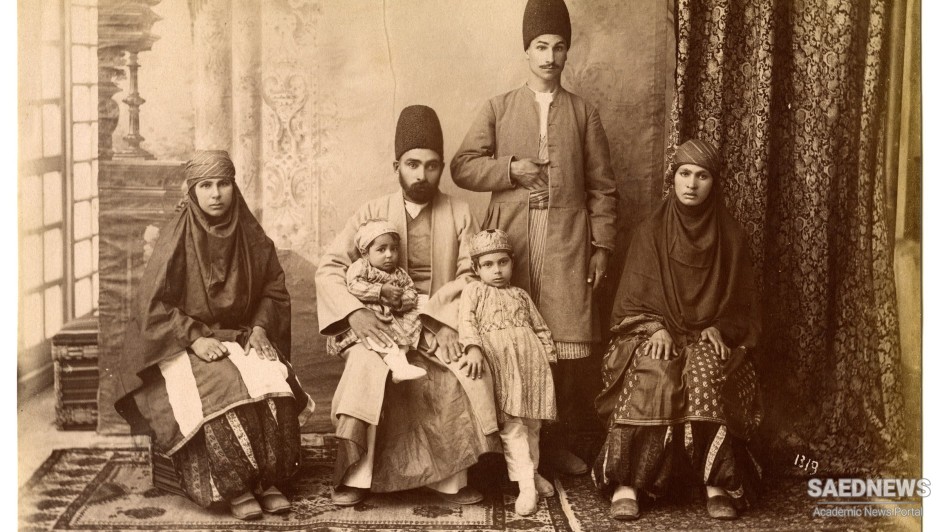The 80–85 per cent of nineteenth-century Iranians living in rural areas and practising agriculture, animal husbandry and the domestic labour which sustained households and communities founded the communal aspects of their lives on material self-sufficiency and adaptability. Settled village communities raised diverse food or forage crops, combining field cultivation, raising animals and orchard or garden production to meet their needs. Nomad communities supplemented pastoralism with cultivation, and the exchange of products with urban or village purchasers within local and regional economies. Clothing and basic tools were also produced within households and the community. Family labour intersected with collective work such as ploughing, herding, harvesting or organising irrigation, all involving co-operation within villages or nomad encampments. Foreign observers like local authors depict rural areas reliant on producing their own grain, forage and pulses as well as fruit, nuts and vegetables. Shared responsibilities for the payment of dues or crop shares to landlords, government officials or community specialists (blacksmiths or carpenters), for self-defence, and for key productive tasks, further strengthened material and social links within rural settlements. The demands of seasonal migration, of dealings with settled communities, government officials and other nomadic groups, and of raiding and hunting, similarly reinforced relationships within and between nomad encampments. The extensive arid, mountainous and unsettled terrain in Iran and consequent difficulties with communication, compounded by the lack of initiatives to improve transport facilities, further encouraged local and regional self-reliance and self-sufficiency, and the collective activities, which, while cross-cut by other interests, maintained daily existence and shaped people’s understanding of their lives and identities (Source: Religion, Culture and Politics in Iran).


 Shah, White Revolution and Covered Westernization of Iranian Society
Shah, White Revolution and Covered Westernization of Iranian Society














































